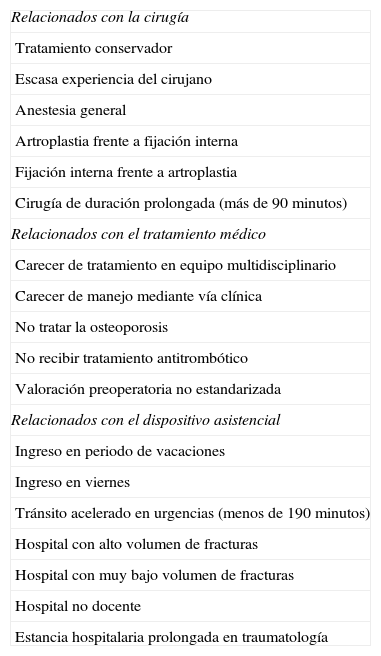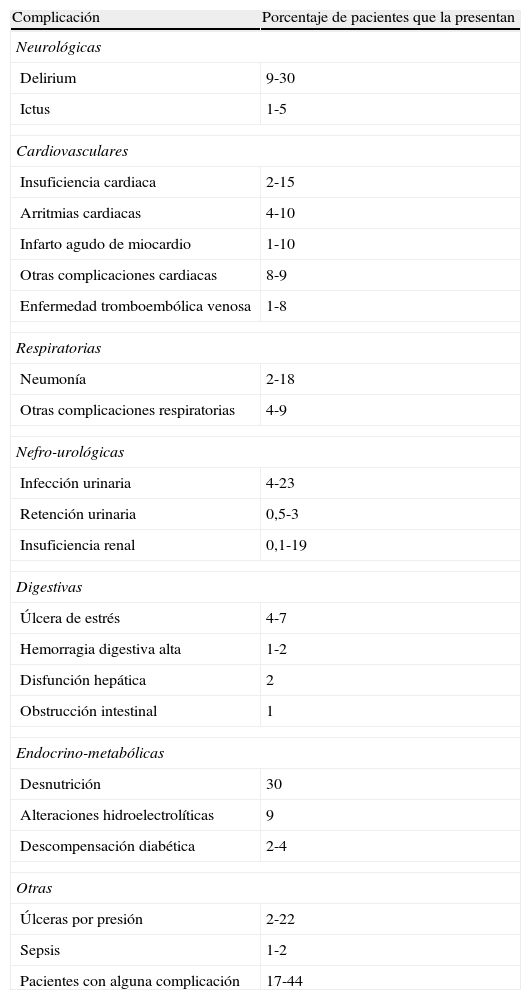La tasa de mortalidad después de sufrir una fractura de cadera es muy elevada, duplica la de las personas de la misma edad sin fractura y el exceso de mortalidad se mantiene durante años. Existen una serie de factores conocidos, dependientes del paciente, que se asocian a una mayor mortalidad y que permiten identificar a los portadores de mayor riesgo de muerte, pero los mecanismos íntimos de la relación entre fractura y mortalidad no son bien conocidos. Las causas de defunción no difieren de las habituales en la edad avanzada. Los pacientes del sexo masculino están especialmente expuestos. Durante el postoperatorio temprano fallecen más los pacientes previamente más frágiles y con mayor comorbilidad, pero durante los meses y años posteriores la mortalidad también afecta a personas previamente saludables. Algunas estrategias que pueden reducir la mortalidad debida a la fractura de cadera son la reducción de su incidencia, el manejo multidisciplinar de todo el proceso asistencial y la instauración de tratamiento de fondo para la osteoporosis.
The mortality rate after a hip fracture is very high. It doubles those of people of the same age without fracture and the excess of mortality remains for years. There are several patient-dependent factors known to be related to the higher mortality and they allow identifying the patients with a higher risk of death, but the intrinsic mechanisms of the association between fracture and mortality are not well known. The causes of death are the same as the usual in the elderly. Males have a higher risk. The more fragile patients and those with more comorbidities die more frequently during the early postoperative period, but in the following months and years the mortality affects to healthier people too. Some strategies that can reduce the mortality include the reduction of hip fracture incidence, the multidisciplinary management of the process and osteoporosis treatment.
Artículo
Comprando el artículo el PDF del mismo podrá ser descargado
Precio 19,34 €
Comprar ahora










